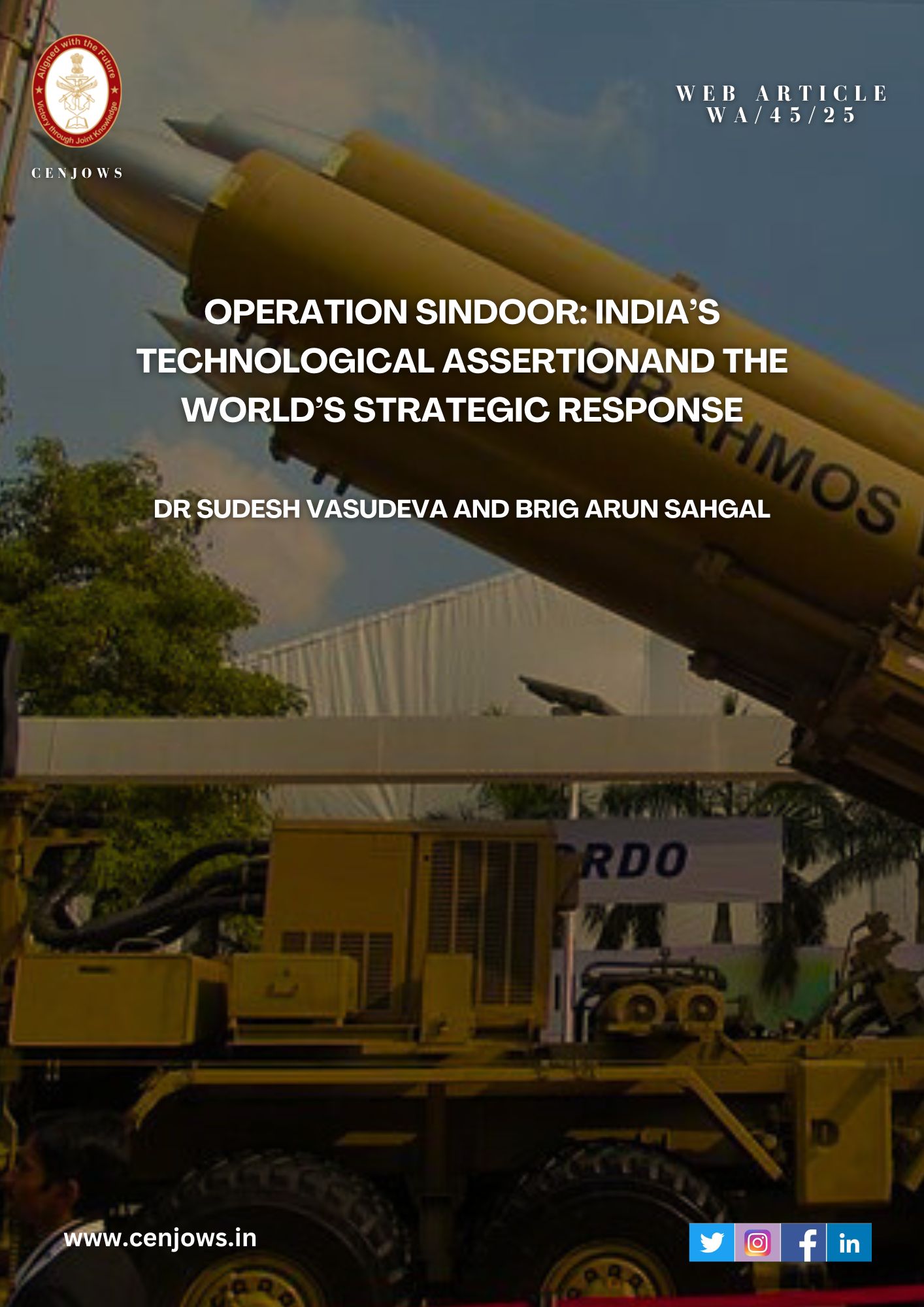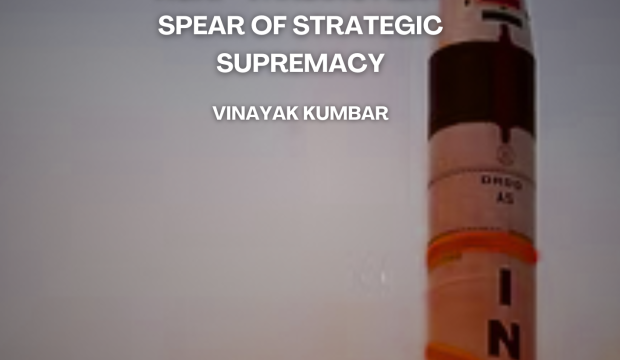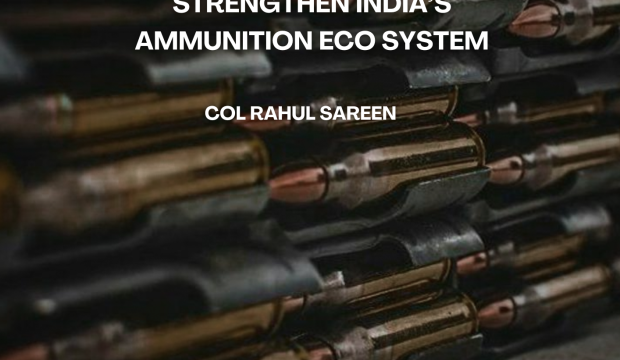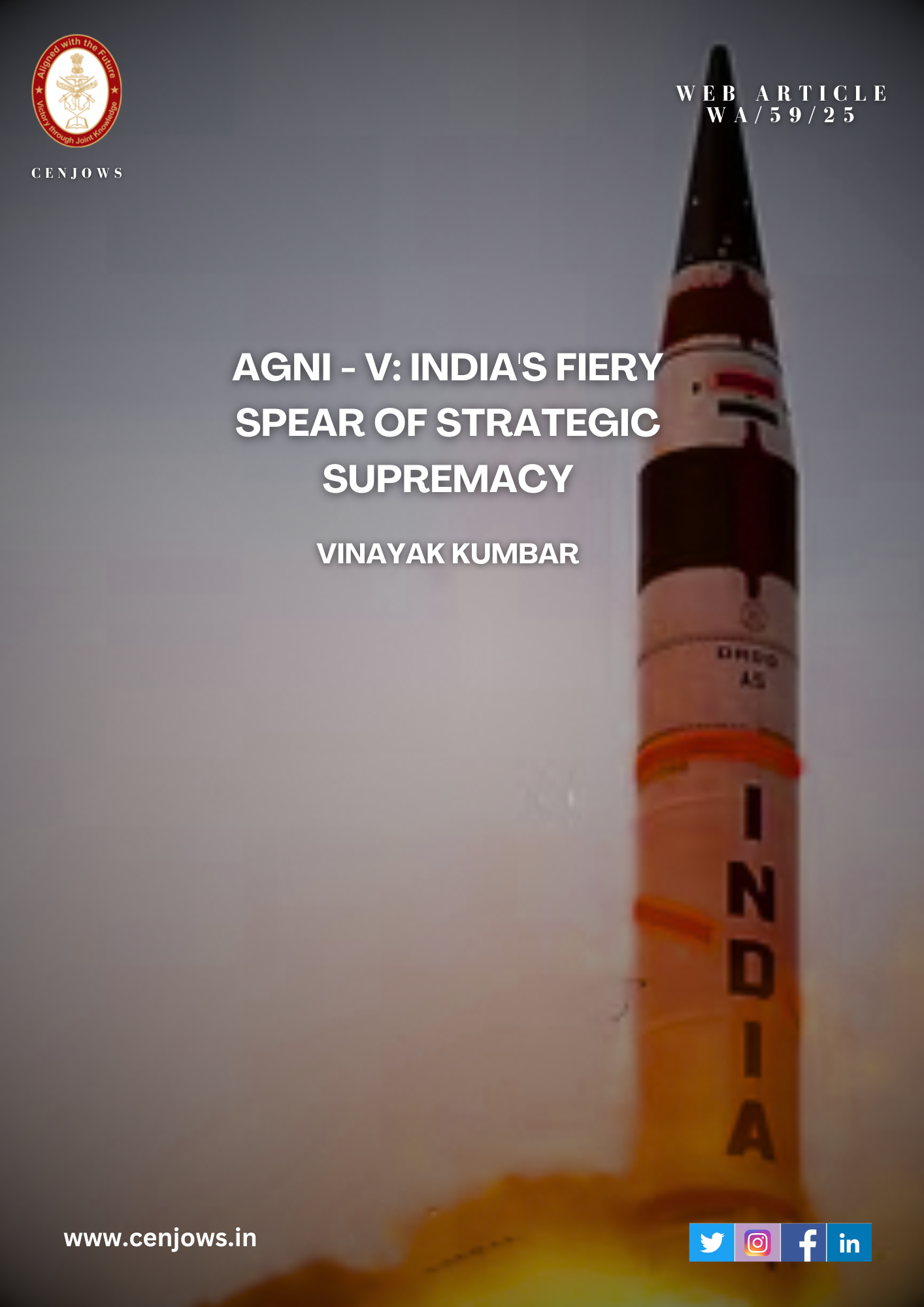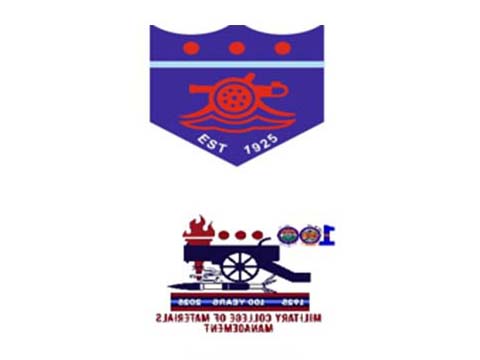Abstract
Op Sindoor represents evolution of India’s doctrine for operations in multi domain environment. Standoff response against multiple terror targets and their ideological bases both in POJK and across international border with great accuracy and precision highlights this technological advancement. This calibrated act marks a new doctrine of punishment for acts of cross border terror, highlighting India’s new stated policy “all acts of terror will be deemed as acts of war”, giving India the right of appropriate response. In the above backdrop this paper examines indigenous technologies and home-grown systems that underpinned the success of the operations. This is essential as the fundamental perspective shaping the doctrinal percept of Op Sindoor was the technological advancement and architecture that pinned the operational precision and effectiveness. Drawing on open-source intelligence, expert commentary, and other analysis, this paper argues that Operation Sindoor was not merely a tactical success or a strategic inflection but even more importantly technologically empowerment of India driven by Atamnirbhar programme.
Introduction
Operation Sindoor 1,2,3 began on 7 May 2025, when India launched coordinated missile and air strikes against terrorist infrastructure in Punjab Province of Pakistan and Pakistan-occupied Kashmir. This was a direct response to Pakistan sponsored terrorist attack on 22 April 2025, at Pahalgam by “The Resistance Front” (TRF), which resulted on religious based killing of 26 civilians. TRF is an offshoot of the well-known Pakistan backed terrorist organisation Lashkar-e-Taiba.
Indian response was centred on carefully selected terrorist camps and infrastructure linked to Jaish-e-Mohammed and Lashkar-e-Taiba. Attacks involved use of high-precision weapons, while avoiding Pakistani military or civilian installations. Importantly the strikes were executed as a tri-services mission involving all three services viz the Army, Navy, and Air Force.
Post these strikes conflict escalated quickly, with Pakistan retaliating by drone, missile, and mortar attacks on Indian military and civilian targets starting the night of 7–8 May 2025. Both sides exchanged further strikes over the next four days, resulting in the first-ever ‘drone’ battles between the two nuclear-armed nations. Operation Sindoor and the broader conflict ended on 10 May 2025, when following deadly Indian strikes on 12 Pakistani frontline airfields, one suspected command and control node and an UAS base, Pakistan sought urgent ceasefire.
Within the above backdrop this paper discusses the following aspects:
(Schematic diagram of
(a) Target and Weapons System Analysis, highlighting the nature and type used by both sides.
(b) Technology as the backbone of Op Sindoor.
(c) Review of Specific Technologies employed during Op Sindoor and their Impact.
(d) Strategic Messaging and Global Perceptions
(e) Way Forward: Operation Sindoor Demands a Review
Targets and Weapon System Analysis
Details of targets attacked by India in Pakistan are as under: –
| Location | Group | Description |
Markaz Subhan Allah, Bahawalpur | JeM | Headquarters for recruitment and indoctrination |
| Markaz Taiba, Muridke | LeT | Ideological and logistical hub near Lahore |
| Sarjal, Tehra Kalan | JeM | Training and weapons storage site |
| Mehmoona Joya, Sialkot | HM | Operational base near the border |
| Nur Khan Airbase, Rawalpindi | _ | Strategic Pakistan Air Force base hit by BrahMos missile |
| Location | Group | Description |
| Markaz Abbas, Kotli | JeM | Command and control facility |
| Maskar Raheel Shahid, Kotli | HM complex | Launchpad for infiltration into Rajouri-Poonch |
| Shawai Nalla Camp, Muzaffarabad | LeT | Tactical training and logistics hub |
| Syedna Bilal Camp, Muzaffarabad | JeM | Weapons and jungle warfare training centre</span> |
Targets in Pakistan-Occupied Kashmir (PoK)
Airbase Damaged: Sargodha, Nur Khan (Chaklala), Bholari, Jacobabad, Sukkur and Rahim Yar Khan. (Compiled by Authors)
Details of Weapon Systems used by India and Pakistan 4,5,6,7:-
1. Indian Armed Forces Weapon system:
| Platform/ Branch | Weapon System | Type/Role | Origin | Range/Specs | Key Features |
| Army | Excalibur Artillery | Precision-guided artillery shell | USA | 40+ km | Long-range, high precision strikes on terror camps |
| Army | Loitering Munitions | Kamikaze drones | Indigenous/Israel | 10–100+ km | Real-time reconnaissance, autonomous strikes |
| Army | MMGs, ATGMs | Infantry support | Indigenous/Imported | _ | Used in border skirmishes |
| Air Force | Rafale/Mir age 2000, Su30 MkI Fighter Jet | Multirole combat aircraft | France/Ru ssia | 3,700 km (ferry)/ ? | Delivery of SCALP, HAMMER, Meteor missiles7 |
| Air Force | SCALP Missile | Long-range cruise missile | France (MBDA) | 450–500 km | Deep strikes on fortified terror bases |
| Air Force | HAMMER Bomb | Precision-guided bomb | France (Safran) | Up to 70 km | Medium-range, all-weather, jamming-resistant |
| Air Force | BRAHMOS Missile | Supersonic cruise missile | India-Russia | 450–500 km | Bunker-busting, rapid strikes on airbases |
| Air Force | METEOR Missile | BVRAAM (Air-to-Air | Europe (MBDA) | >100 km | Air superiority, neutralized airborne threats |
| Air Force | S-400 Air Defence | SAM system | Russia | 400 km | Intercepted Pakistani aircraft and missiles |
| Air Force | Sukhoi-30 MKI | Multirole combat aircraft | Russia/India | 3,000 km (ferry) | Delivery of BrahMos, air superiority |
| Navy | BRAHMOS (Naval) | Supersonic cruise missile | India-Russia | 450–500 km | Ship/submarine-launched strikes |
| Navy | Barak-8 SAM | Surface-to-air missile | India-Israel | 70–100 km | Intercepted incoming missiles/drones |
| Navy | INS Vikrant (Carrier) | Aircraft carrier | India | _ | Power projection, deterrence in Arabian Sea |
2. Pakistani Armed Forces
| Platform/Branch | Weapon System | Type/Role | Origin | Range/Specs | Key Features/Use inOperation Sindoor |
| Army | Fatah-1/2 Missiles | Tactical ballistic missile | Pakistan | 150–400 km | Used for retaliatory strikes |
| Army | Chinese LY 80, HQ-9 | Air defence system | China | 40–200 km | Attempted interception of Indian missiles |
| Army | Mortars, Artillery | Indirect fire support | Indigenous/Imported | _ | Shelling in Jammu, Poonch |
| Air Force | JF-17 Thunder | Multirole combat aircraft | Pakistan/China | 2,037 km (ferry) | Air defence, limited counter-strikes |
| Air Force | J-10C | Multirole combat aircraft | China | 1,850 km (ferry) | Air defence, counter-air operations |
| Air Force | F-16 | Multirole combat aircraft | USA | 4,220 km (ferry) | Air defence, limited counter-strikes |
| Air Force | SAAB 2000 AEW&C | Airborne early warning | Sweden | – | Surveillance, command and control |
| Air Force | Turkish Bayraktar TB2 | Armed drone | Turkey | 150 km | Reconnaissance, limited strike |
| Air Force | Asisguard Songar | Armed drone | Turkey | 10+ km | Short-range attack drone |
| Navy | Chinese Frigates | Warships | China | _ | Maritime patrol, deterrence |
| Navy | Submarines (Type 039) | Diesel-electric submarine | China | _ | Undersea operations |
Technology as the Backbone of Op Sindoor
Strategic Rationale for Indigenous Technologies. India for long has been seeking indigenous technologies essentially to maintain operational independence during crises, sanctions, or supply-chain disruptions. Such an autonomy of action ensures that India’s military can respond swiftly and decisively to operational scenarios without being constrained by foreign suppliers or shifting geopolitical alliances. Even more importantly, technological independence is central to developing home-grown systems designed to address India’s unique security environment—ranging from high-altitude borders to dense jungles—ensuring optimal performance and reliability in real-world scenarios.
Technological Evolution and Doctrinal Shifts
Integration of Advanced Systems: Recent operations, including Operation Sindoor, have demonstrated Indian military’s ability to integrate a diverse suite of technologies, such as loitering munitions, anti-drone systems, and advanced air defence platforms, into a unified, networked force. This integration has been central to enhancing information dominance, enabling rapid, precise, multi-domain responses.
Jointness and Proactive Posture: The evolving doctrine emphasises “jointness” (integration across Army, Navy, Air Force) and a proactive, technology-driven approach. This marks a shift from reactive postures to operations that combine deterrence by denial (defensive capability) and deterrence by punishment (credible offensive capability)9.
Technology driven Operational Impact
First and foremost is the precision and effectiveness: Indigenous systems like the Akash missile and Akashteer electronic warfare suite backed by space-based navigation, communication and information systems were decisive in neutralising advanced threats, including foreign-supplied missiles and drones. Their operational success was attributed to years of investment in indigenous research and development resulting in indigenous defence eco-system.
Integrated Command and Control: The Integrated Air Command and Control System (IACCS) developed over the years enabled real-time intelligence fusion and seamless coordination among different forces, vital for the swift operational execution.
4. Economic and Industrial Advantages
An important aspect of indigenisation is the boost to domestic industry. This helps in stimulating economic growth by fostering a robust defence industrial base, supporting MSMEs, generating employment, and reducing the economic drain from imports. India’s defence production has seen a substantial rise, reflecting this strategic shift. Yet another perspective has been the evolution of innovation ecosystem: The involvement of the services design bureaus, DRDO, and private industry has created an innovation ecosystem where solutions are tailored to frontline needs and rapidly fielded, further strengthening India’s defence capabilities.
5. Deterrence and Regional Power Dynamics
Another important strategic message of Operation Sindoor was the powerful demonstrations of India’s technological and military prowess, sending a clear deterrent message to the adversaries, by highlighting our ability to conduct precise, limited actions with minimal collateral damage force application, thereby enhancing India’s credibility as a regional net security provider. Enhanced techno military capabilities also help in developing resilience by reducing vulnerability to technology denial regimes and external diplomatic pressures.
Review of Specific Technologies employed during Op Sindoor and Impact
Precision-Guided Munitions and Missiles
- SCALP (Storm Shadow) Cruise Missiles (8) of French origin: Deployed from Rafale fighter jets, these long-range, air-launched cruise missiles (range >500 km) used infrared seekers and low-altitude flight to evade radar, enabling surgical strikes on hardened targets such as bunkers and command centres.
- BrahMos Supersonic Cruise Missiles (9): Used for their state-of-the-art guidance systems, developed through years of- indigenous research by DRDO and Russia, ensuring pinpoint accuracy.
- Precision Strike Weapon System (PSWS) (10) utilized GPS, infrared, radar, and laser targeting for high-precision strikes, minimizing collateral damage and civilian risk.
Unmanned Systems and Counter-Unmanned Aerial System(C-UAS) (10)
- Long-Range Drones and Loitering Munitions: Enabled deep penetration and real-time surveillance, supporting both strike and reconnaissance missions.
- Counter-Unmanned Aerial Systems (C-UAS): Indigenous systems like the D-4 Anti-Drone System with support from Akashteer provided layered defence against hostile drones and UAVs.
- Neutralising Hostile Technologies: Indian forces neutralized and recovered Turkish-origin UAVs, Chinese PL-15 missile fragments, and commercial quadcopters, demonstrating the effectiveness of indigenous air defence and electronic warfare networks.
Air Defence and Electronic Warfare (11)
- Akash Missile Defence System: A short-range surface-to-air missile system with Electronic Counter-Counter Measures (ECCM), capable of engaging multiple targets in both group and autonomous modes.
- Integrated Air Command and Control System (IACCS): Enabled net-centric operations, fusing data from radars, control centres, and missile batteries for real-time threat assessment and interception.
- Electronic Warfare and Jamming: Indian Air Force successfully bypassed and jammed Pakistan’s Chinese-supplied air defence systems, completing missions without loss of assets.
C4ISR and Real-Time Targeting
A defining feature of Operation Sindoor was its reliance on C4ISR (Command, Control, Communications, Computers, Intelligence, Surveillance, and Reconnaissance). Satellite imagery, UAV feeds, and AI-driven data fusion enabled real-time target acquisition and battle damage assessment. The integration of these systems allowed Indian forces to strike with surgical precision, minimizing civilian casualties and maximizing strategic impact.
Space and Cyber Capabilities 11 ,12,13
- Satellite Integration: At least 10 ISRO satellites provided round-the-clock border monitoring, supporting navigation, targeting, and real-time intelligence.
- NavIC Satellite Navigation: India’s indigenous satellite navigation system ensured high-precision guidance for munitions and platforms(5).
- Cyber Operations: Operation Sindoor marked the first formal synchronization of cyber, space, air, land, sea, and information warfare in an Indian military operation, disrupting adversary communications and command structures.
Multi-Domain Warfare: A Paradigm Shift
Operation Sindoor was not limited to kinetic strikes. It represented a new doctrine of multi-domain warfare (MDW) integrating:
- Land, Air, and Sea Operations: Coordinated strikes and defensive postures across all physical domains.
- Space and Cyber Integration: Real-time satellite intelligence and cyber disruption of enemy networks.
- Information Warfare: Strategic communication and counter-disinformation campaigns to shape narratives and maintain operational secrecy.
Strategic Messaging and Global Perceptions
As India continues to navigate a complex security environment, the lessons of Operation Sindoor must serve as a blueprint for future engagements—where technology, strategy, and narrative converge. This also puts onus on the establishment to examine critical gaps those emerged during the operations. These need to be addressed on priority.
Operation Sindoor was a calibrated response designed to restore deterrence without triggering full-scale war. By limiting the operation’s scope to non-civilian targets and using precision-guided munitions, India conveyed its intent to punish aggression (15) while avoiding escalation (Calibrated Deterrence). The message to Pakistan was clear: proxy war would invite swift and technologically superior retaliation and attempts at escalation will be met with QPQ + responses, indicating the ability to manage escalation dominance along various rungs of escalation ladder.
Way Forward: Operation Sindoor Demands a Review
In the aftermath of Operation Sindoor, India stands at a critical juncture in its military and strategic trajectory, in its emergence as a major military power and net regional security provider. Much like the lessons drawn after the 1999 Kargil conflict, Op Sindoor too has thrown up important lessons entailing review of both doctrinal, force structures and technological requirements for operating in multi domain environment.
It is important that the success of tactical missions must be accompanied by institutional introspection to ensure long-term preparedness, credibility, and deterrence taking cognisance of future conflicts and even more importantly the end sate that we aspire.
No doubt Operation Sindoor, aimed at neutralising cross-border terror infrastructure in Pakistan-Occupied Jammu and Kashmir, was a bold display of India’s military resolve. However, like in all past operations this too exposed several operational and systemic gaps, some of which include —clarity in understanding escalation dynamics and even more importantly the end state, intelligence sharing, levels of defence preparedness, joint command structures and more importantly operational integration. Shaping the national and global narrative and perception management are other important areas.
As in the case of Kargil Operations, review committee, which suggested sweeping reforms, there is a need for a similar internal process:
- Evaluating strategic coordination at the national level, in terms of objectives and end state.
- Status of joint force interoperability, and steps needed to enhance the same.
- Bolster information and psychological warfare capabilities
- Address technological, logistical, and doctrinal deficits, in a pre-designated time frame.
Key Areas Requiring Urgent Attention
Strategic Communication and Perception Management
- During Operation Sindoor, India could not proactively control the narrative, allowing misinformation to spread. Pakistan’s communication strategy outpaced India’s in global forums, with media manipulation and diplomatic outreach. This eroded India’s diplomatic edge despite military success.
Air Defence and Intelligence Coordination. This remains an eternal gap.
- Aircraft losses and few infrastructure hits indicate vulnerabilities in air surveillance and missile interception systems (Kill chains).
- Joint operations, lacked seamless data sharing and communications impacting response time.
- Civil-military intelligence coordination remains fragmented.
Tactical and Doctrinal Gaps
- The focus remains on visual-range air combat, whereas adversaries like China and Pakistan are investing in Beyond Visual Range (BVR) missile systems.
- India must revamp its air combat doctrines and invest in real-time battlefield awareness systems.
Institutional Inertia
- While reforms post-Kargil were transformative, India lacks a consistent military audit culture post every major conflict. Repeated lapses in intelligence and coordination reflect the need for continuous war-gaming, simulation, and evaluation protocols. Institution of Red Team concept for techno-operational evaluation is emerging as a critical necessity.
Institutionalize Military Stocktaking
- Setup national Military Commission, to audit the entire spectrum—strategic, operational, and tactical, in the backdrop of phenomenal technology developments. Studying and assigning role and integration of new systems is an imperative need.
- Need for improving civil-military fusion in decision-making, especially in the fast-paced future conflicts.
- Enhance information dominance capabilities—cyber warfare, satellite surveillance, and narrative control.
- Strengthen air and missile defences by integrating DRDO, armed forces, and private innovation.
- Regular joint training and simulation drills must be institutionalized across services.
Conclusion
The operation provided a fairly high degree of tri-service coordination. Whereas Air Force executed deep-strike missions in the hinterland, the Army carried out ground-based engagement and fire support. Navy maintained maritime deterrence by dominating sea lanes and providing sea-based deterrence. Special Forces units conducted covert operations to mark targets and disrupt enemy communications.
This level of interoperability was enabled by a unified command structure and shared digital infrastructure. Operation Sindoor is widely seen as a turning point in India’s military and strategic posture toward Pakistan, setting new precedents for rapid, high-precision retaliation against cross-border terrorism.
As highlighted, Operation Sindoor validated India’s long-term investments in indigenous defence technology, from missile systems to electronic warfare and satellite integration. The fusion of public and private sector innovation enabled India to assert itself as a technologically advanced military power. In a large measure Operation Sindoor validated Atamanirbhar Bharat (14) (not just as an economic or industrial policy, but as a strategic doctrine.
Some of the important takeaways are;
- From Deterrence to Decisive Action: Indigenous systems enabled India to shift from reactive defence to proactive, precision-based deterrence.
- Inter-Service Coordination: Seamless coordination between Army, Navy, and Air Force was made possible through Indian-developed C4ISR systems.
- The operation sent a clear message to adversaries and allies alike—India is not dependent on foreign suppliers for critical defence capabilities.
DISCLAIMER
The paper is author’s individual scholastic articulation and does not necessarily reflect the views of CENJOWS. The author certifies that the article is original in content, unpublished and it has not been submitted for publication/ web upload elsewhere and that the facts and figures quoted are duly referenced, as needed and are believed to be correct.
References
- Economic Times. 2025. “Press Briefing on Operation Sindoor at 10:00 AM Today: Defence Ministry.” May 7, 2025. https://economictimes.indiatimes.com/news/defence/press-briefing-on-operation-sindoor-at-1000-am-today-defence-ministry/articleshow/120947702.cms.
- Consulate General of India, Istanbul. 2025. “Summary of Operation SINDOOR.” May 10, 2025. https://www.cgiistanbul.gov.in/section/news/summary-of-operation-sindoor/.
- NewsOnAir. “Operation Sindoor.” Special Programs Category. May 7, 2025. https://www.newsonair.gov.in/special-programs-category/operation-sindoor
- Times of India. 2025. “Coverage of Operation SINDOOR.” May 8, 2025. https://timesofindia.indiatimes.com.
- Wikipedia. 2025. “2025 India–Pakistan Conflict.” Accessed July 22, 2025. https://en.wikipedia.org/wiki/2025_India–Pakistan_conflict.
- India Today. 2025. “Operation SINDOOR: Tactical Overview.” May 19, 2025.
- Study IQ. 2025. “Weapons Used in Operation SINDOOR.” May 9, 2025. https://www.studyiq.com/articles/weapons-used-in-operation-sindoor/.
- LinkedIn. 2025. “Operation Sindoor: A Turning Point in India’s AI-Powered Defense.” May 21, 2025.
- MBDA Systems. n.d. “STORM SHADOW/SCALP.” https://www.mbda-systems.com.
- Kulkarni, Sushant. 2025. “Story of BrahMos: The ‘Fire and Forget’, Stealthy Cruise Missile India Likely Used Against Pakistan.” The Indian Express, May 13, 2025. https://www.brahmos.com.
- Study IQ. 2025. “Weapons Used in Operation Sindoor.” https://www.studyiq.com/articles/weapons-used-in-operation-sindoor/.
- Vision IAS. 2025. “Defense Technology in Operation Sindoor.” June 17, 2025. https://dce.visionias.in/monthly-magazine/2025-06-17/security/defense-technology-in-operation-sindoor.
- Press Information Bureau (PIB). 2025. “Operation SINDOOR: Forging One Force – The Synergy of India’s Armed Forces.” May 18, 2025. https://www.pib.gov.in.
- Indiasworld.in. 2025. “Dissecting the Cyber Aspect of Operation SINDOOR.” May 31, 2025. https://www.indiasworld.in.
- Chougule, Pragati. 2025. “Operation Sindoor.” The Bridge Chronicle, May 13, 2025.
- Press Information Bureau (PIB). 2025. “Operation SINDOOR: The Rise of Aatmanirbhar Innovation.” May 14, 2025.
- The Print. 2025. “Op Sindoor Gave Global Visibility to Indian Weapons.” July 8, 2025.
- 99Notes. 2025. “Don’t Delay Stocktaking.” July 3, 2025. https://www.99notes.in/blog/current-affairs/dont-delay-stocktaking.
- 2022. Pinaka Multi-Barrel Rocket Launcher System Documentation. Defence Research and Development Organisation, India.
- 2023. Akash and Akash-NG Missile System Capabilities. Accessed July 22, 2025. https://www.drdo.gov.in.
- 2024. India’s Strategic Missile Programs: The Role of BrahMos in Modern Conflicts. Institute for Defence Studies and Analyses.
- Ministry of Defence. 2024. Annual Defence Technology Review. Government of India.
- PIB (Press Information Bureau). 2025. Anti-Drone Technologies Proven in Operation Sindoor. Government of India.
- 2025. “Combat-Proven: India’s Loitering Munitions Used Successfully in Operation Sindoor.” Swarajya, June 2025. https://swarajyamag.com.

Dr. Sudesh Vasudeva
former Chief Controller (R&D), DRDO, and PSA Fellow, and Brig Arun Sahgal, is founder of Net Assessment (IDS) and consultant with CENJOWS, DRDO, and IIT Kanpur

